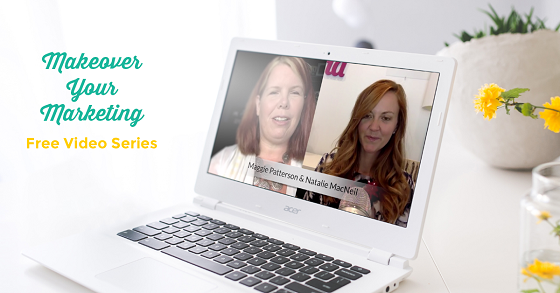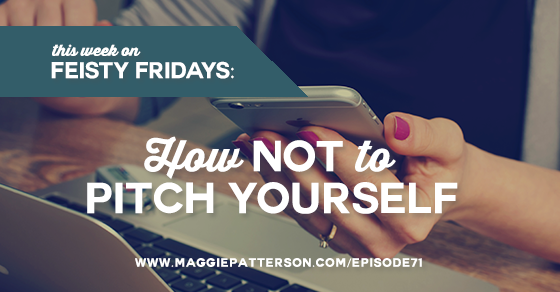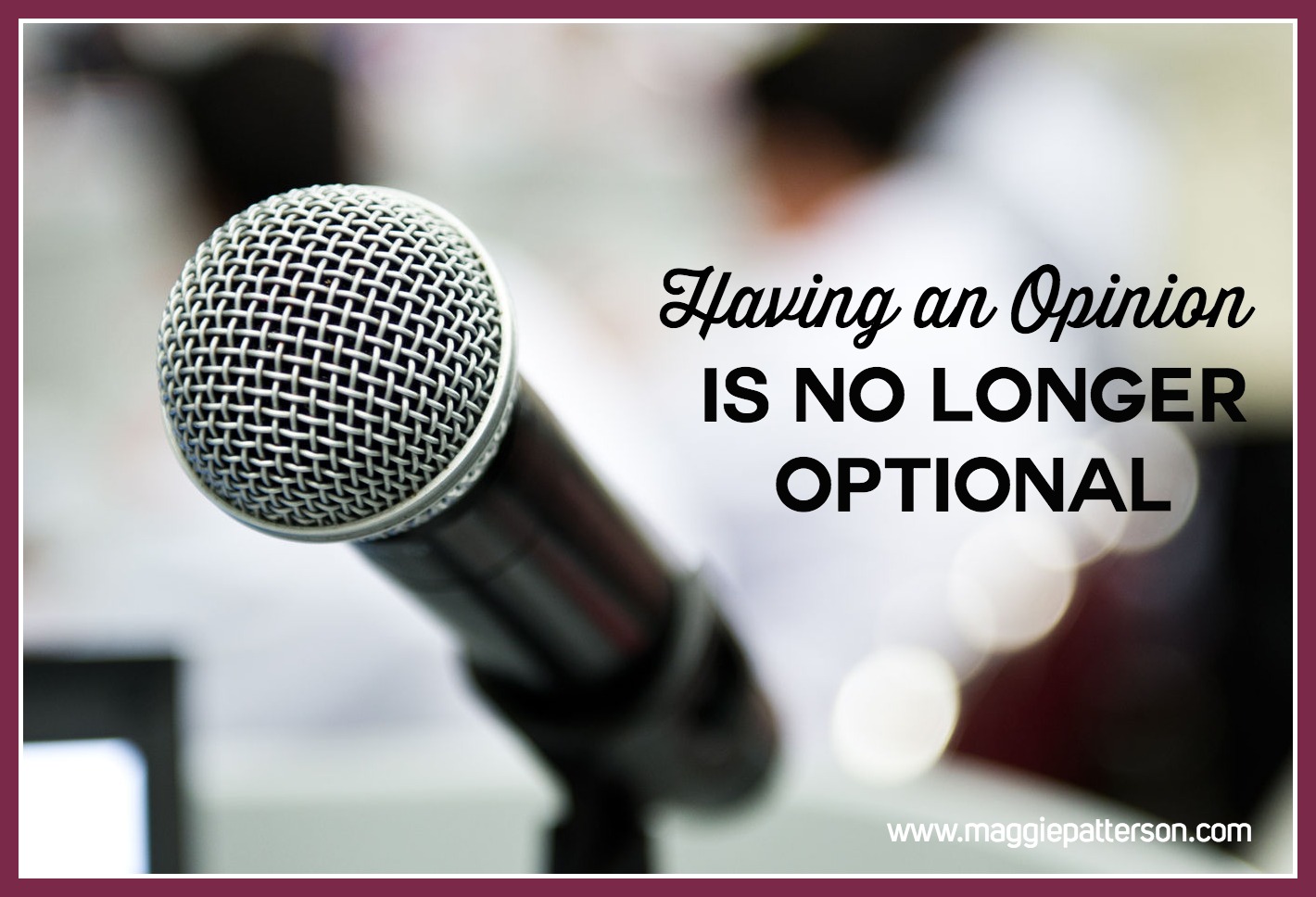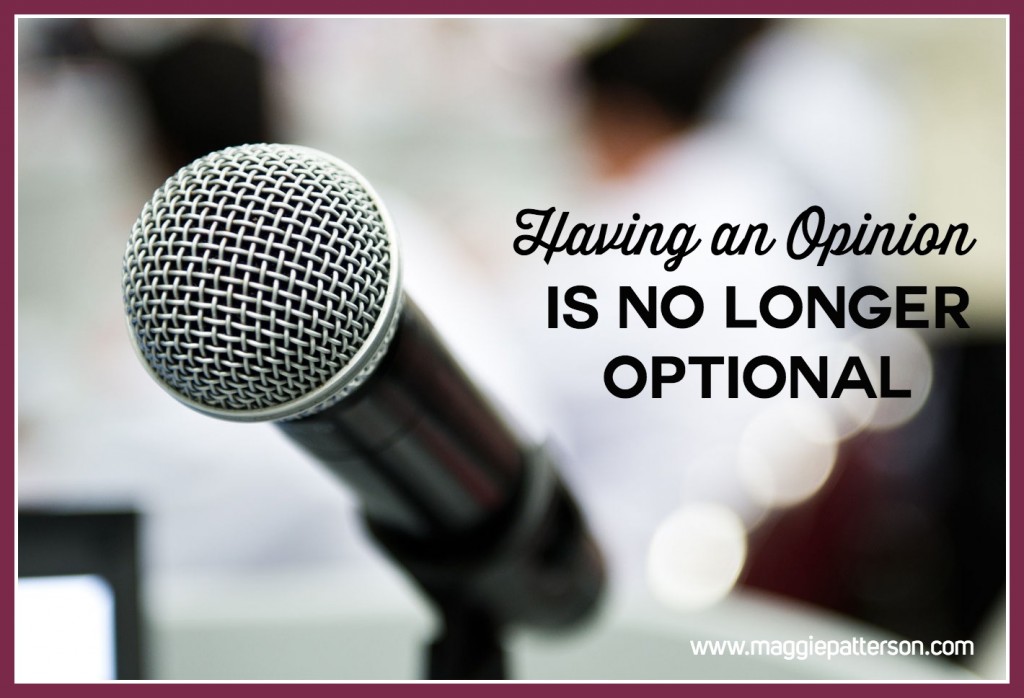
Earlier this week I was working with a client on messaging and storytelling, and she asked me an incredibly astute question.
“How do I NOT sound like all the other coaches out there?”
My immediate response came down to a few things, but the most significant one was that she had to share her strong opinions about what’s wrong with the conveyor belt type of coaching where people are just a number.
There’s a million and one ways you could be noticed, but hands down, the fastest way to get noticed is to have a polarizing point of view. To be the one that says the thing that everyone’s thinking or that at least your tribe has running through their minds. That’s the best way to go about getting your business noticed.
If you’re worried about pissing people off, don’t be. Trend Watching declared the “Brand Stand” as the trend to innovate with and profit from in 2015. The Brand Stand is about brands starting innovative, contentious and necessary conversations.
The Brand Stand doesn’t just help you stand out. Consumers believe brands should speak out. 73% of Millennials believe that businesses should share a point of view.
So while you may turn off some possible buyers (who aren’t the right fit for your business anyways), the payoff will be be much greater in terms of attracting the right customers and helping you avoid being obscure.
The Brand Stand, or as I call it in the Story Distillery Process, Getting Bold and Brazen (or the Polarizing Point-of-View), is a big part of your business’ story. It speaks to your brand’s heart and character as much as sharing your story or that of your customers.
Here’s how to be polarizing and make it a positive for your business:
Step #1: Get Comfortable with Sharing Your Opinion
You may be thinking, “No way, I’m not like THAT.”
But I’m willing to bet you believe in something when it comes to your business. I mean, clearly there’s some chutzpah lurking deep within you because, hello, if you wanted to do things the easy way, what are you doing running your own business?
Did you start a business for everyone to like you? Are you worried about people not liking you? What’s at the root of you not wanting to share your opinion?
Yeah, I get it. Especially if you’ve ever been branded a loudmouth, ball buster, or any other assorted things because you were willing to voice your opinions. (I totally relate, I’ve been called ALL of the above, and then some.)
If you’re in this to succeed, get comfy with your opinion and get okay with people not agreeing with you. It’s okay for people to not agree with you, and it’s not personal.
Diversity of opinion is necessary and needed. It’s up to you to speak up.
A few people I think do a great job of sharing opinions (even if you totally disagree) are: Paul Jarvis, Natalie MacNeil and Courtney Johnston. You’ll notice it’s not all dramatic, but they have a clear point of view on what they do share and there’s no guesswork about where they stand.
Step #2: Be Clear on What You Do Stand For
Once you’re ready to take a stand, you need to spend some time getting clear on what exactly it is you stand for.
Because here’s the thing. You can’t just pick something that you’re lukewarm on. Or something for the sake of choosing something. That shit won’t fly.
To be effective and capture attention, you need to have fire in your belly. You need to have a real, true belief in what you’re saying, otherwise no one is going to buy it.
Get clear on what pisses you off or what needs to change and what you want you/your brand to be known for.
On the flip side, don’t try to own all the issues. Carefully curate a few things, stick to a theme and make sure it’s aligned with your brand. Too many brand stands and you’re doing more harm than good.
Step #3: Make it Productive (And Not Crazy Ass Ranting)
Don’t let your brand stand devolve into the equivalent of angry girl teen angst where you’re listening to Rage Against the Machine or Nine Inch Nails all the time and hating the world.
That much anger or hostility isn’t good for you, and it’s not good for your business either. When you’re picking what you stand for, focus on how you can not only discuss the issue, but how you can be part of the solution.
By proposing solutions, sharing new ideas and owning the issue, you’re creating real change and not just being a big old complainer.
A prime example of this is a couple years ago, I wrote a post on 5 Ways to Ditch the Press Release which got a lot of attention, so much so that one of the leading PR Newswires was threatened and wrote a response post. That post was effective because it wasn’t pointless ranting, but offered productive alternatives.
Ready to Take Your Brand Stand?
The Marketing Makeover Starts Monday October 26th!
So, are you ready to take your brand stand? Good news, I’ve teamed up with my friend and mentor Natalie MacNeil for a FREE 4 part training next week (Starting Monday October 26th) called The Marketing Makeover.
It’s 4 days, 4 mini lessons including a discussion and worksheet on the brand stand. We will give you an honest look at key things you need to do to grow your business, and actionable strategies to make it happen. Plus you get lots of inside scoop on what’s working for our businesses and what we really think about many things in the online business world. (And it’s short – no messing around – 10 minutes a day and you’re done!)












 Growing up I was always one of those kids that sort of did my own thing. I wasn’t super concerned with what we were supposed to do or following everyone else. I wore what I liked, I was friends with a variety of interesting people, and that was a recipe for being pretty happy overall.
Growing up I was always one of those kids that sort of did my own thing. I wasn’t super concerned with what we were supposed to do or following everyone else. I wore what I liked, I was friends with a variety of interesting people, and that was a recipe for being pretty happy overall. It’s an ongoing struggle for most entrepreneurial types – do you go DIY in your business or bring in a pro to take care of it?
It’s an ongoing struggle for most entrepreneurial types – do you go DIY in your business or bring in a pro to take care of it?